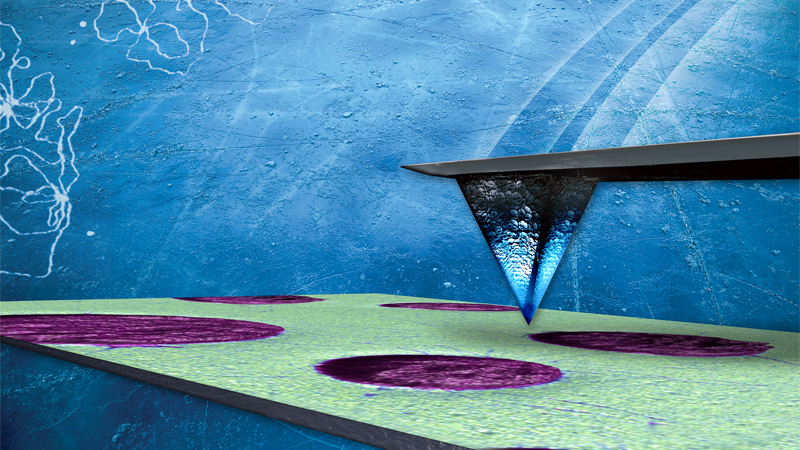Force Pulling
Force pulling is a point spectroscopy technique where force spectra are collected to extract quantitative nanomechanical property information related to adhesion, molecular unfolding, and single molecule (un)binding events.
In force pulling, a pre‑calibrated AFM probe is ramped in the Z direction, bringing it into and out of contact with a sample surface. The retract portion of the resulting force‑distance curve is analyzed to obtain quantitative measurements of the forces acting on the probe as it is pulled away from the surface. These forces can provide insights into structural and mechanical properties, such as molecular unfolding and adhesion. AFM probes can also be functionalized with small ligands to study (un)binding forces with specific molecules on a sample surface. In general, the spring constant of the AFM probe used should be closely matched to the type of interaction forces that are being measured.
Force pulling can be applied to a wide range of materials. It is complementary to other mechanical property AFM modes, such as FV and PeakForce QNM that conduct full material property mapping over the entire surface area. Force pulling is often preferred over these other modes in cases where isolated, individual force measurements, or a small array of force curves, are sufficient for studying specific location(s) on a sample surface.
